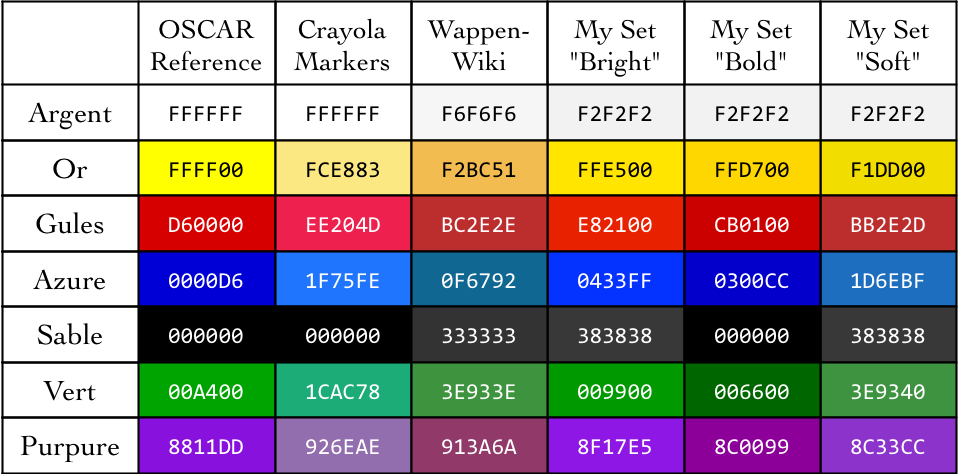Any set of colors can be used for armory if they can be unambiguously interpreted as heraldic tinctures.
It’s not uncommon to use different palettes in different contexts or for different arms, depending on the project and bearer’s tastes.
Using jewel-tone colors can help to simplify the submission process for Society armory; light pastels and dark muddy colors are both frowned upon. On the other hand, you don’t have to use garish extreme colors that could only be found on a computer screen.
Remember that it’s good to submit hues that reflect what the registrant will actually display at events, so that people who use the submitted armory as a guide for scrolls or rolls of arms will emblazon the arms accurately.
Below are examples of palettes that you can use as starting points, including three that I’ve used for different projects.

There’s also an expanded version of this table that includes a few more palettes and examples of uncommon tinctures such as brown and orange, available as a large PNG or as a downloadable PDF.
None of these colors is official or authoritative, so you can use any colors that appeal to you as long as they are clear and don’t cause confusion.
When preparing forms for Society armory submissions, it can also be useful to understand the gamuts of OSCAR’s color-checking tool, but again those are guidelines rather than requirements.
My thanks to the many folks who contributed the data shown here.
- Inspired by the “SCA Heraldry Chat Unofficial RGB Tincture Mappings” charts by Albrecht Waldfurster.
- OSCAR values estimated with the help of Elena Wyth.
- Crayola marker link from Bill Knight.
- WappenWiki values from Owen Tegg.
- Conal Mac Nachtan values from Bill Knight.
- Andreas von Meißen values from Andrew Mizener
- French Wikipedia link from Randy Shipp.
- Swedish State link from Claus K. Berntsen.

2 thoughts on “Hexcodes for Heraldic Tinctures”